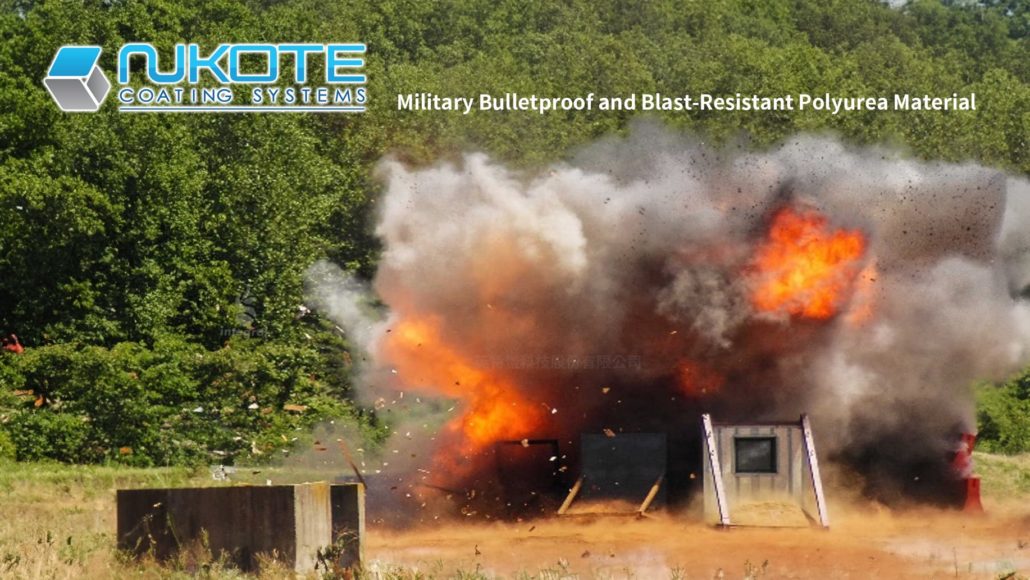
NUKOTE MI Military Bulletproof and Blast-Resistant Polyurea Material
After the 9/11 terrorist attacks, the United States established blast and bullet resistance as standard requirements for military defense infrastructure.
They formulated and implemented regulations and standards for blast protection primarily focused on safeguarding concrete structures, reducing fragmentation and secondary collapse resulting from explosions to prevent injuries to personnel.
Additionally, the United States developed ballistic protection standards aimed at external protection for armored vehicles and vessels to resist penetration by 9mm military ammunition.
Characteristics
- The NUKOTE MI series products are specially developed polyurea materials designed to meet the requirements of military bulletproof and blast protection. They provide exceptional, concealed, and invisible protection for military personnel.
- MI polyurea maximizes the strength and durability of bulletproof vests while minimizing the impact of flying debris following high-power explosive blasts.
- This material can be applied to various substrates such as concrete, steel, fiberglass, and aluminum, forming a rubber-like membrane. It helps mitigate the force of explosions and aids in securing the substrate together, offering a perfect balance of strength and flexibility. It maintains structural integrity and provides excellent impact resistance even under extreme conditions, such as car bomb explosions, missile attacks, or drone strikes.
- MI polyurea enables military vehicles to withstand gunfire, landmine explosions, improvised explosive devices, and other harmful threats.

Applications
- Armored vehicles for troop transport and light armored attack vehicles
- Armored vehicles for the Coast Guard and light attack ships
- Explosion mitigation for inspection checkpoints, bases, and ammunition storage bunkers
- Explosion mitigation for naval facilities and air force bases
- Blast protection for government, military, and private buildings with steel or concrete structures, including aircraft
- Protection of storage tanks containing flammable liquids
- Corrosion protection for water and fuel oil tanker trucks
- Use in emergency vehicles such as fire trucks, police cars, ambulances, trucks, and vans


